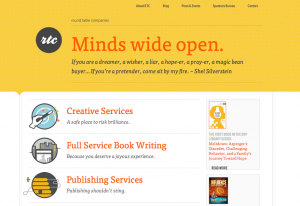

Compelling stories have a strange hold on people. You can lose an afternoon to binge-watching your favorite show or experience a range of emotions while reading a novel.
The reason people love stories is biological. Stories put the world in perspective and help people see their place in it. As a marketer, a carefully crafted message allows audiences to relate to a brand’s story and keeps them coming back for more.
To help unlock and convey a brand’s story, here are four key storytelling elements you need to harness.
Help Audiences Identify With the Brand’s Story
If you want your audience to care, you have to understand them. Talking to a group of 20-somethings the same way you would a room full of stodgy actuaries will disappoint everyone. Figure out the brand’s story, and define the elements that will interest listeners. Once you know what they like or empathize with, use it to your advantage.
Consider this African fable that Nike used in an ad: “Every morning in Africa, a gazelle wakes up. It knows it must outrun the fastest lion, or it will be killed. Every morning in Africa, a lion wakes up. It knows it must run faster than the slowest gazelle, or it will starve. It doesn’t matter whether you’re a lion or gazelle -- when the sun comes up, you’d better be running.”
Everyone can identify with either the lion or the gazelle. The brand understands that its audience runs for different reasons, and this proverb communicates a universal truth every runner can connect with.
Invite Them Into the Story
Personal involvement separates a mediocre storyteller from a good one. Give audiences a role in the brand’s story, and they’ll see themselves as an extension of it.
Start by discovering your audience’s story -- why they do what they do, where they came from, and what matters most to them. Ask the right questions, and show that the brand cares. You’ll learn a great deal and gain their respect.
“Thrive,” Kaiser Permanente’s campaign, encapsulates this idea. Not everyone wants the same characteristics in a doctor, which is normal. “Thrive” puts the choice in customers’ hands and gives them a say. Remind your audience that the brand is human by inviting them to take part in the experience.
Embrace Conflict (and Resolve It)
Breakups, car accidents, stubbed toes -- hard things happen in life. In every story, there’s some sort of conflict or tension that needs to be resolved before the curtain falls. That’s what pulls people in and keeps them.
Bad things happen to brands, too. Companies might lose sales to competitors or be forced to cut jobs. Weave these problems into the brand’s story to make it more relatable and approachable. Audiences gravitate toward honesty.
For some time, Domino’s baked lousy pizza. The ingredients, assembly, and delivery service were all bad. Then, a new CEO came on board and turned everything around. Company commercials acknowledged the mistakes (conflict) and owned up to them (resolution). Through its refreshingly candid ads and efforts to improve quality, Domino’s won back consumer trust and upped its stock price by nearly 1,500%.
Create Narrative Patterns to Maintain Cadence
Cadence is crucial to persuasive storytelling, and it starts with creating patterns. If consumers can naturally identify patterns in your narrative, they’ll connect the dots easily -- particularly if you guide them along. If the cadence is off or you leave holes in the story, it will create dissonance.
Some storytellers have a cadence that changes as the brand story evolves. For others, a fast cadence would confuse their audience. Establish a pattern that helps your audience understand the brand’s value -- and why it matters to them.
Nike is built on driving the competitive spirit. Its ads and messaging pull audiences back to their own days of competition -- the high school track race, the Little League diamond -- and revives their competitive spirit. You don’t have to be an Olympic athlete to associate with the brand; Nike unites its diverse audience around the competitive drive, which resolves potential dissonance.
People crave compelling stories. They live for rich storylines, relatable protagonists, and conflict resolution that brings a story full circle. Invite your audience into your brand’s story, and speak candidly about hardships. You’ll not only make the brand more relatable, but by exhibiting vulnerability, you’ll also lay the groundwork for a relationship to bloom.

![Have Agencies Abused the Term 'Storytelling'? [Interview]](http://53.fs1.hubspotusercontent-na1.net/hubfs/53/00-Blog_Thinkstock_Images/agency-storytelling.png)






